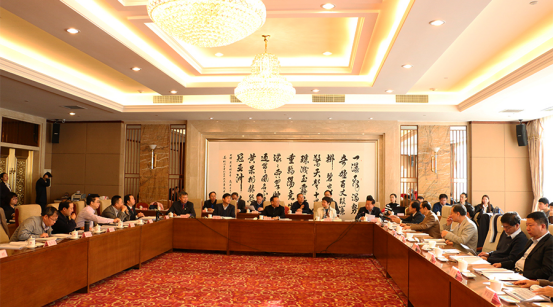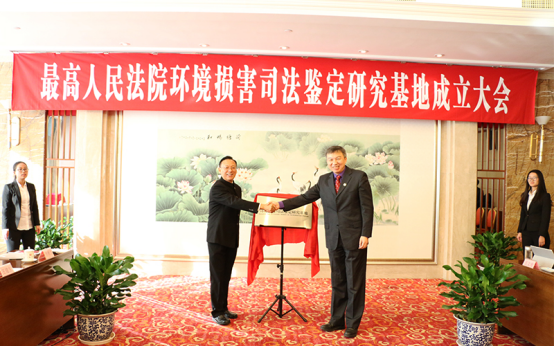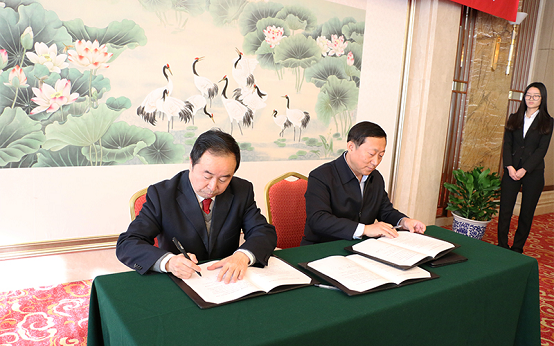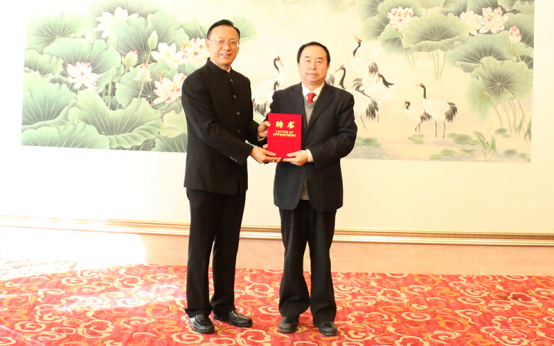

An Environmental Damage Judicial Authentication Research Base of the Supreme People’s Court (SPC) of the People’s Republic of China (PRC) was founded on November 12, 2016. During the ceremony, the Theory and Practice Seminar was held. The ceremony and the seminar were co-hosted by the Environment and Resources Division of SPC and Tianjin University. Jiang Bixin, Vice President of SPC and Shu Gequn, Vice President of Tianjin University jointly unveiled the research base.

At the founding ceremony, a “Cooperation Framework Agreement Between the Environment and Resources Division of SPC and Tianjin University” was signed by Wang Xuguang, Deputy Presiding Judge of the Environment and Resources Division of SPC and Sun Youhai, Dean of the Law School of Tianjin University and Executive Director of China Green Development Institute.

At the ceremony, Professor Sun Youhai was appointed as the Director of the Environmental Damage Judicial Authentication Research Base, and some 20 experts and scholars in relevant fields were employed as researchers. They were presented appointment letters by Jiang Bixin.
In his speech, Jiang Bixin stated that the foundation of the research base is another beneficial movement to enhance the research on judicial theories of environment and resources under the co-operation of the Environment and Resources Division of SPC and universities.
Many problems exist in the judicial authentication of environmental damage, which have caused the bottleneck in the trials of environment and resource issues. For instance, the lack of professional and credible judicial authentication institutions, absence of a unified qualification and technical standards, high costs, and the long periods of authentication. In a bid to solve these issues and establish a scientific, normative and rational authentication system, the management of the judicial authentication on environmental damages needs to be unified. The technical method of related assessments should be regulated and the systems of accountability and guaranteeing funds need to be completed. In the connection between the judicial authentication and the legal proceedings, a clear understanding is required in the relationship between technical and judicial judgments, and between authenticated and expert opinions and other evidences.
In the meantime, the seminar on the “Theory and Practice of Environmental Damage Judicial Authentication” was held. Nearly 20 experts and scholars from a number of Government agencies, universities and research institutes discussed frontier issues including the theory and practice of environmental damage judicial authentication, and environmental health.
At the closing ceremony, Director Sun Youhai concluded that the Environmental Damage Judicial Authentication Research Base would conduct prospective, fundamental and applicable research under the supervision of the Supreme People’s Court and centered on the major decisions in consultation with the Government regarding environmental judicial theory. Focusing on the national demands, the base would progress towards distinctive features and institutional innovation. Taking the four-dimensional innovation enhancements in consultations that would lead to policy-making, cultivation of talents, scientific research, and disciplinary development as its basic tasks, the base would support the environment and resources trials of key regions. Through tackling the key issues in analytical chemistry, geochemistry, environmental sciences, laws and regulations, the base would facilitate the development of China’s environmental damages judicial authentication system, building it into a decision-making powerhouse with considerable clout.